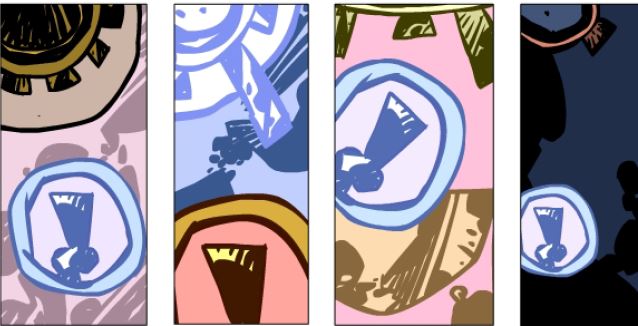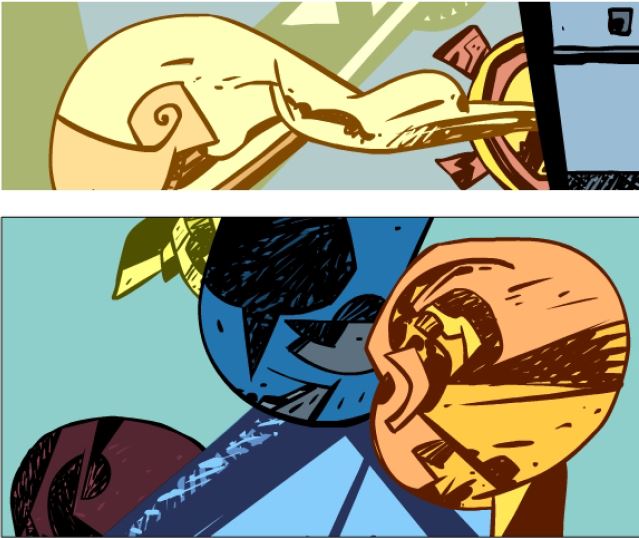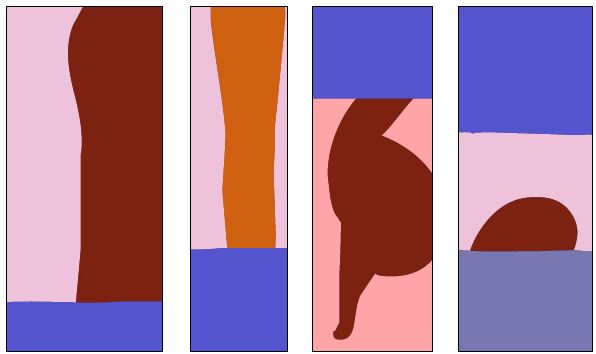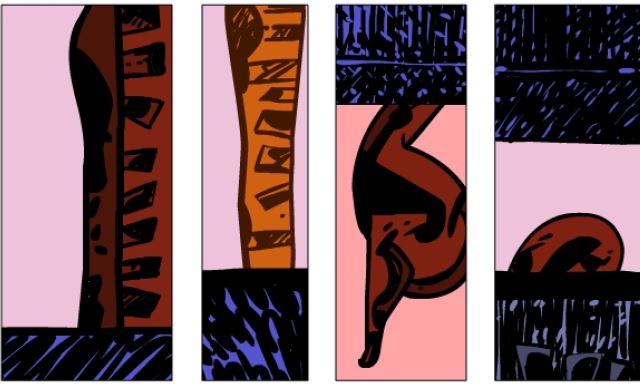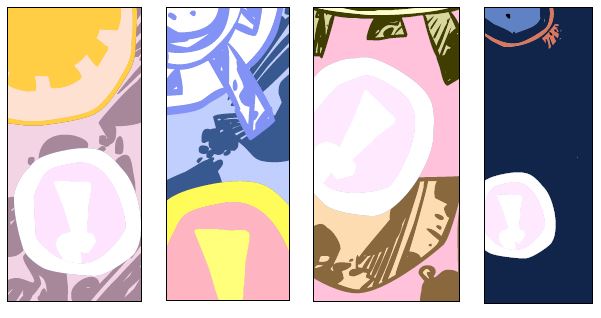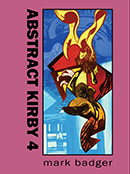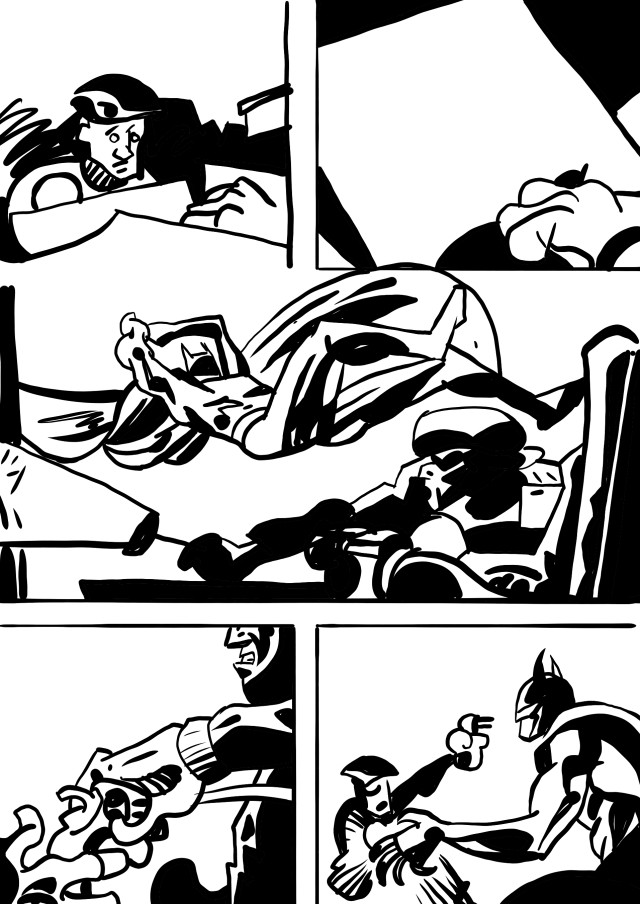Abstract Kirby is an experiment in making all the ghosts of artists past floating in my head into one comic. It also is, panel by panel silencing of the editorial sniping, the limited view of comics as one thing the way the person-in-power likes it. Letting go of all the stupid editorial voices in my head has been a practiced almost daily ritual. Feeling comfortable with the drawing I’ve started making comics that look the way I want to enough to adding color to the work.
A friend asked to purchase a page. So I printed a pdf from Adobe Flash. Sent it off and she picked a page from it when it came back. Except that Flash had destroyed all the line because when you treat the objects in Flash to their filters Adobe Acrobat can’t render them correctly into a PDF. She got something that looked like this.
I quickly jiggered the process to send her the correct images. But then the flat color stuck in my head like some evil super-villain that can’t be destroyed. So now what do I do?
Clear-line is a European style that grew out of Herge’s Tin-Tin. People were drawn in simple forms without heavy details. The spaces were drawn with correct perspective and with just enough information to tell you things where. No flashy cross hatch no dramatic lighting. Just line drawings defining what it is. One of my first teachers laid that out for me in art school. Even now the goal of that pure simple line is floating in my head.
Fat blacks laid in over a line drawing and cross hatching for value indicate light. In abstraction, they develop and reinforce shapes making you continually question what an artist wants as shape and line in a composition. In comics the use of a brush and the line drawing was the dominant way to get the hand into the image, tracking the artist and making the artist have a feel. Walter Simonson’s line differs from Craig Russell’s differs from Jose Munoz. I’ve alway enjoyed the play of drawing as you develop layers of cross hatch on top of each other.
But now I have to figure out how to handle my oops.
